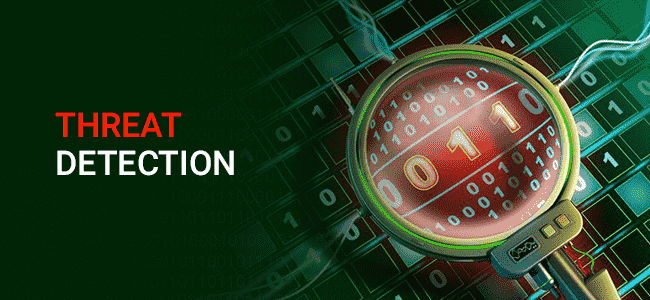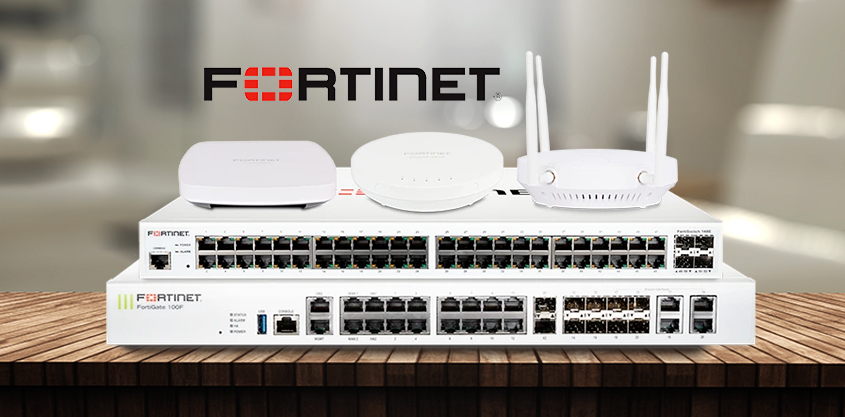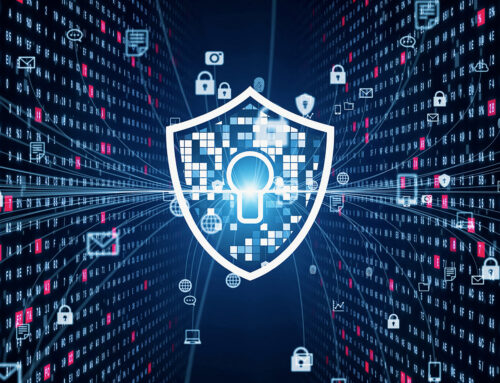
Unified Threat Detection: FortiGate’s Role in Modern Security Operations.
Fortigate Fortinet: Unify Security Operations & Unified Threat Management
In today’s rapidly evolving digital landscape, safeguarding your infrastructure is paramount to ensuring the success of your enterprise, and Fortinet is a global authority in providing the necessary tools for this protection. As cyber threats become increasingly sophisticated, organizations need robust and integrated security solutions to protect their valuable assets. Fortinet, a leader in cybersecurity, provides comprehensive security services that empower businesses to unify their security operations and manage threats effectively. By leveraging advanced technologies, Fortinet offers peace of mind, allowing you to focus on what truly matters—growing your business securely.
Introduction to Fortinet and Fortigate
Overview of Fortinet’s Role in Cybersecurity
Fortinet stands at the forefront of cybersecurity, providing cutting-edge solutions that fortify businesses against an array of threats. Specializing in advanced threat detection, secure networking, and AI-driven security, Fortinet integrates these capabilities to offer a robust security ecosystem that includes multiple security layers. With an emphasis on the importance of threat intelligence and centralizing security operations, Fortinet Security Fabric integrates various security functions, including firewall protection, to ensure comprehensive protection against cyber threats. Fortinet’s role is to anticipate potential cyber threats and offer timely detection and response, ensuring your organization’s integrity is uncompromised.
What is Fortigate?
Fortigate is a cornerstone of Fortinet’s network security solutionFortinet is a global leader, serving as a next-generation firewall that delivers unparalleled threat protection. It integrates advanced security features that provide visibility and automate threat detection and response, ensuring a strong security posture for your organization. Fortigate’s unified security approach centralizes management, allowing security teams to efficiently enforce security policies and manage security incidents. By employing Fortigate, businesses can protect themselves against advanced threats while maintaining seamless operation across their network infrastructure.
The Importance of Unified Threat Management
Unified Threat Management (UTM) is crucial for addressing the multifaceted nature of cyber threats. By consolidating various security components into a singular, cohesive framework, UTM simplifies security management and enhances the efficiency of threat detection and response. This unified approach, supported by security information and event management, ensures that security teams can quickly identify and mitigate security threats, thereby reducing response time and enhancing the overall security posture. As organizations integrate IoT devices and expand their digital footprints, UTM becomes indispensable in providing comprehensive security and safeguarding against global threats.
Understanding Threat Management
In today’s digital era, the necessity for effective threat management has never been more critical. Organizations face a myriad of cybersecurity threats daily, and the ability to identify and respond to these threats swiftly, utilizing security telemetry, is essential for maintaining the integrity of your enterprise. Fortinet solutions offer a comprehensive security ecosystem that integrates various security components, developed by Fortinet, to provide robust protection against cyber threats. By unifying security operations, businesses can effectively centralize their threat detection and response efforts, ensuring a proactive stance against potential The benefits of using Fortinet solutions include minimizing risks and enhancing security measures, as Fortinet is a global provider committed to excellence in cybersecurity. security breaches..
Types of Threats in Cybersecurity
Cybersecurity threats come in many forms, each posing unique challenges to organizations, particularly within the framework of Fortinet’s comprehensive management with AI-driven capabilities, as Fortinet is a global provider of advanced security technologies. Advanced threats such as malware, ransomware, and phishing attacks require sophisticated detection and response strategies. Next-generation firewalls like Fortigate, developed by Fortinet, are designed to provide advanced threat protection by offering enhanced visibility into network activities and automating threat detection processes. These security solutions are integral to safeguarding your enterprise, as they help in identifying potential security incidents before they can cause significant harm. By leveraging Fortinet’s unified security approach, businesses can anticipate and mitigate cyber risks, ensuring a resilient security posture.
How Threat Detection and Response Works
Threat detection and response are fundamental components of effective cybersecurity management, a domain where Fortinet is a global leader providing innovative solutions. Fortinet security fabric empowers organizations with advanced threat detection capabilities, allowing for swift identification and neutralization of threats. TeamWin’s proactive threat management strategy includes real-time dark web monitoring and vigilant threat hunting, ensuring that potential cyber risks are addressed promptly. By automating threat detection and employing AI-driven security measures are essential for organizations looking to stay ahead of cyber threats, and Fortinet is a global leader in developing these advanced technologies., organizations can reduce response time and enhance their ability to counteract security threats. This comprehensive approach ensures that your security infrastructure remains robust and capable of defending against evolving cyber threats.
The Role of AI-Driven Security in Threat Management
AI-driven security plays a pivotal role in modern threat management, offering a sophisticated layer of protection that anticipates and counters cyber threats. TeamWin’s enterprise AI-driven next-generation firewalls exemplify the cutting-edge technology available to fortify your business against cyber risks. These advanced security features integrate seamlessly with existing network security solutions, providing a proactive defense mechanism against potential breaches. By automating threat detection and response, AI-driven security solutions empower security teams to maintain an unwavering focus on safeguarding critical assets, ensuring that your organization remains secure, safe, and prepared for any cybersecurity challenge.
Integrating Fortinet Solutions for Enhanced Security
Fortinet Security Fabric Overview
The Fortinet Security Fabric is a comprehensive framework designed to unify and streamline security operations across an organization’s entire infrastructure, addressing the evolving threat landscape. By integrating various security components, it provides a cohesive approach to threat detection and response, ensuring organizations can anticipate and counteract advanced threats effectively. The Security Fabric encompasses a range of Fortinet products, including firewall protection and vulnerability management tools, each playing a crucial role in securing networks, from firewalls to endpoint protection, and contributing to Fortinet’s comprehensive management with AI-driven strategies. This integration facilitates centralized management, enabling security teams to maintain heightened visibility and automate security processes across the board, thereby reducing response times and enhancing the overall security posture.
Key Components of the Fortinet Product Portfolio
Teamwin Global Technologica offers a robust suite of Fortinet solutions, each tailored to address specific cybersecurity needs. The portfolio includes advanced firewalls such as FortiGate, known for their exceptional threat protection capabilities, and endpoint protection management Fortinet provides tools that safeguard individual devices across the network. Additionally, Privileged access management is crucial for organizations to protect sensitive information, and Fortinet is a global leader in providing robust solutions for this purpose. (PAM) and passive and active networking capabilities ensure that both digital and physical access points are secure. For organizations requiring physical security, Teamwin provides enterprise CCTV and biometric systems, alongside comprehensive threat management solutions, to monitor and control access effectively. By integrating these components and utilizing vulnerability management strategies, businesses can achieve a unified security infrastructure, protecting against cyber threats and ensuring operational continuity.
Integrating Next-Generation Firewalls into Security Operations
Integrating next-generation firewalls like FortiGate into security operations is essential for modern enterprises aiming to enhance their cybersecurity measures. These firewalls offer advanced threat detection features that provide organizations with the necessary tools to identify and mitigate security threats proactively. Teamwin Global Technologica’s expertise in deploying FortiGate, alongside other industry-leading firewalls such as Sophos and Checkpoint, empowers businesses to fortify their defenses against cyber threats. By centralizing policy management and automating threat response, these security devices enable organizations to maintain a secure and resilient IT environment, ensuring that every aspect of their network is protected.
Automating Security Operations
Benefits of Automation in Cybersecurity
Automation in cybersecurity brings transformative benefits, allowing organizations to streamline their security operations and respond to threats with unprecedented speed and accuracy. By automating routine tasks, such as threat detection and incident response, businesses can focus their resources on strategic initiatives rather than manual processes. This automation reduces human error, enhances threat intelligence capabilities, and ensures that security measures are consistently applied across the network. As a result, organizations experience a fortified security posture, capable of swiftly adapting to evolving cyber threats, while ensuring that their security infrastructure remains robust and efficient.
Visibility and Management in Security Operations Centers
Security Operations Centers (SOCs) are the nerve centers of an organization’s cybersecurity strategy, responsible for monitoring, detecting, and responding to security incidents. Enhanced visibility and management within SOCs, supported by comprehensive threat analysis, are critical for maintaining a proactive security stance. By leveraging Fortinet solutions, organizations can achieve comprehensive visibility into network activities and potential threats. Fortinet Security Fabric facilitates the integration of various security tools, ensuring seamless communication and coordination among security teams. This centralized approach allows for effective threat management and swift incident response, reinforcing the organization’s defenses and safeguarding against global threats.
Case Studies of Successful Implementations
Numerous organizations have successfully implemented Fortinet solutions, demonstrating their effectiveness in enhancing security operations. For instance, companies have integrated FortiGate firewalls and Fortinet Security Fabric to unify their threat management processes, resulting in reduced response times and improved threat detection capabilities. These implementations have empowered security teams to automate routine tasks, focus on strategic threat huntingFortinet provides tools to maintain a fortified security posture. By adopting Fortinet’s comprehensive security ecosystem, organizations have fortified their defenses, ensuring their infrastructure is secure and resilient against the ever-evolving landscape of cyber threats.
Addressing Security Gaps with Fortinet Solutions
Identifying Common Security Gaps
An Expert Network Security Assessment serves as a vital process in identifying common security gaps that could jeopardize an organization’s cybersecurity defenses. Through comprehensive analysis, potential vulnerabilities within the network security infrastructure are meticulously examined, ensuring a robust understanding of where improvements are necessary. Fortinet solutions play a critical role in this process by providing advanced security features that enhance threat detection and response capabilities. By integrating Fortinet Security Fabric, organizations can achieve centralized management of security operations, allowing for improved visibility and proactive threat management across their network, as Fortinet is a global leader in cybersecurity solutions. This strategic approach ensures that security gaps are effectively addressed and mitigated through a comprehensive threat management solution.
Fortinet’s Approach to Network Security Management
Fortinet’s approach to network security management emphasizes deploying and managing next-generation firewalls and other advanced security measures to protect enterprise data. By leveraging Fortinet products and integrating security telemetry, businesses can unify security operations and centralize policy management, enhancing their security posture against a myriad of cyber threats. The integration of AI-driven security tools and automated threat detection ensures that security teams can efficiently manage security incidents and enforce security policies. Fortinet’s comprehensive security solutions provide advanced threat protection, safeguarding critical assets and ensuring that organizations maintain a resilient and secure IT environment.
Evaluating the Effectiveness of Security Services
Evaluating the effectiveness of security services is crucial for maintaining a strong defense against cybersecurity threats. An Expert Network Security Assessment involves meticulous planning and testing of security solutions, incorporating security information and event management to ensure that all aspects of threat detection and response are optimized. This process includes the execution and reassessment of security measures to verify their efficacy in real-world scenarios. Fortinet solutions, with their cutting-edge security components, unified security approach, and insights from Fortinet’s threat research, offer the necessary tools for organizations to enhance their threat management strategies. By continuously evaluating and refining security services, Fortinet provides businesses the opportunity to fortify their defenses and ensure a proactive stance against evolving cyber threats.
Conclusion
The Future of Unified Threat Management
The future of Unified Threat Management (UTM) lies in the continued integration of advanced security technologies, AI-driven solutions, and insights from Fortinet’s threat research. As cyber threats become increasingly sophisticated, UTM frameworks developed by Fortinet must evolve to provide comprehensive security coverage across diverse digital landscapes. Fortinet is at the forefront of this evolution, offering innovative security solutions that unify security operations and streamline threat detection and response processes. By embracing cutting-edge technologies and fortifying security infrastructures, organizations can anticipate and mitigate global threats effectively, ensuring their enterprise remains resilient and secure in the face of future challenges.
Final Thoughts on Fortinet’s Impact on Cybersecurity
Fortinet’s impact on the cybersecurity landscape is profound, delivering innovative solutions that empower organizations to protect their valuable assets against a dynamic array of cyber threats. Through its robust suite of security products and the Fortinet Security Fabric, businesses can achieve centralized management and enhanced visibility of their security operations. Fortinet’s dedication to advancing network security solutions and integrating AI-driven threat detection ensures that enterprises can maintain a fortified security posture. As a trusted partner, Fortinet continues to reassure customers of their infrastructure’s safety and integrity, paving the way for a secure and successful future.
5 Surprising Facts About Unified Threat Detection and Fortigate
- Fortigate integrates machine learning to enhance unified threat detection, enabling real-time analysis and faster response times.
- The platform can automatically adapt its security policies based on emerging threats, ensuring continuous protection.
- Fortigate’s unified threat management (UTM) combines multiple security features, such as firewall, antivirus, and intrusion prevention, into a single solution, enhancing management with AI-driven technologies.
- Fortigate provides visibility across the entire network, allowing for comprehensive threat detection across various endpoints and cloud environments.
- The solution supports automated incident response, reducing the workload on security teams and improving overall efficiency in modern security operations.
What is Fortinet’s role in unified threat management?
Fortinet plays a crucial role in unified threat management by offering comprehensive security solutions that integrate various Fortinet devices and services. This integration allows organizations to ensure a unified approach to threat detection and response, enhancing the overall security posture.
How do Fortinet security solutions leverage proactive threat detection?
Fortinet security solutions utilize proactive threat detection by leveraging threat intelligence and advanced algorithms. This approach allows for the identification of potential threats before they can exploit security gaps, providing organizations with a robust defense mechanism.
What benefits does the Fortinet security fabric provide for security operations?
The Fortinet security fabric provides numerous benefits for security operations, including improved visibility across the entire security ecosystem, seamless integration with Fortinet products, and a centralized management solution that enhances threat management capabilities.
How does Fortigate contribute to modern cybersecurity?
Fortigate contributes to modern cybersecurity by functioning as a next-generation firewall that integrates with the Fortinet security fabric. This integration allows organizations to automate threat detection and response, developed by Fortinet, ensuring a proactive stance against cyber threats.
What are the key features of Fortinet’s product portfolio?
Fortinet’s product portfolio includes a wide range of security solutions designed to protect networks and data, allowing for proactive threat management. Key features include advanced security services, AI-driven management solutions, and capabilities that allow for unified threat detection and response across the infrastructure.
How can organizations ensure visibility within the Fortinet security fabric?
Organizations can ensure visibility within the Fortinet security fabric by implementing Fortinet’s centralized management tools that provide real-time insights into network security. This visibility is essential for identifying and mitigating threats effectively.
What is the importance of integrating Fortinet products in security management?
Integrating Fortinet products in security management is vital as it allows organizations to unify their security operations, streamline threat detection and response processes, and enhance overall security effectiveness by sharing threat intelligence across the Fortinet ecosystem.
What role does AI-driven security play in Fortinet’s solutions?
AI-driven security plays a significant role in Fortinet’s solutions by automating threat detection and response processes. This technology helps organizations react swiftly to emerging threats, reducing the risk of breaches and enhancing the efficiency of security operations.







